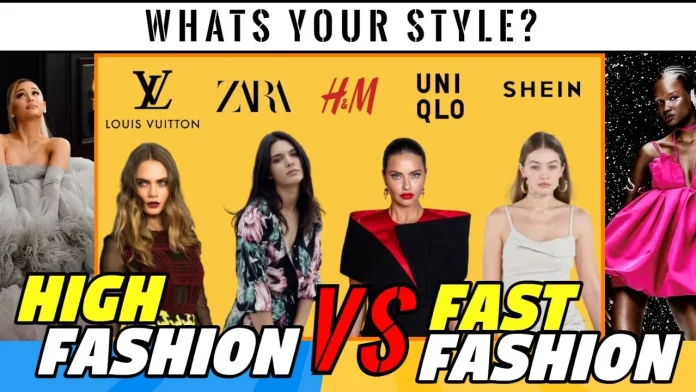Luxury fashion and fast fashion represent two fundamentally different business models in the industry, each with distinct characteristics regarding production, quality, price, and consumer impact.
Business Model
- Luxury Fashion: The model is based on exclusivity, craftsmanship, and brand heritage.2 Production is slow and limited, with brands often releasing just two main collections per year (Spring/Summer and Fall/Winter).3 They focus on creating timeless, high-quality, and iconic pieces that can be worn for years, and even passed down through generations.4 The high price tag is justified by the use of premium materials, skilled artisanship, and the brand’s prestigious story.
- Fast Fashion: This model prioritizes speed, trend replication, and affordability. Brands like Zara and H&M produce new collections almost weekly, sometimes as many as 52 “micro-seasons” per year.7 The goal is to quickly replicate the latest runway or celebrity trends and make them accessible to the masses at a low cost. This relies on a high-volume, quick-turnover approach to maximize sales.
Quality and Materials
- Luxury Fashion: Quality is a hallmark. Brands use the finest, often rare, materials such as silk, cashmere, and high-end leather. Production is meticulous, with a focus on details and artisanal craftsmanship that ensures longevity and durability.
- Fast Fashion: Quality is often sacrificed for speed and low cost. Garments are typically made from inexpensive, synthetic materials like polyester, nylon, and acrylic. These materials are less durable and more likely to lose their shape, color, or texture after a few washes, contributing to a disposable “wear it once” culture.
Environmental Impact
- Luxury Fashion: While not without its own issues (like the burning of unsold stock to maintain exclusivity or the use of resource-intensive materials like certain leathers), luxury fashion’s slower, quality-focused model generally results in less textile waste. The emphasis on durable, long-lasting products reduces the cycle of consumption and disposal. However, production can still involve significant water usage, chemical use, and emissions.
- Fast Fashion: This industry is a major contributor to environmental degradation.16 The rapid production cycle, low-quality materials, and high volume of output lead to massive amounts of textile waste, with millions of tons ending up in landfills each year.17 The production process is resource-intensive, consuming vast amounts of water and energy, and often using toxic dyes and chemicals that pollute waterways.
Labor Practices
- Luxury Fashion: Production is often centered in countries with stricter labor laws, such as Italy, France, or other parts of Europe, and involves skilled artisans who are generally paid fair wages. This is a key part of the “Made In…” label that luxury brands promote.
- Fast Fashion: To keep costs low, many fast fashion companies outsource production to developing countries with lax labor laws and low wages.20 This has led to widespread criticism regarding unsafe working conditions, long hours, and poverty wages for garment workers. The “race to the bottom” to find the cheapest labor is a defining feature of the fast fashion supply chain.
Consumer Relationship
- Luxury Fashion: The consumer relationship is built on investment and emotional connection. Customers buy into a brand’s heritage, story, and the status associated with ownership. A luxury item is a long-term purchase, and the brand fosters loyalty through an exclusive and personalized customer experience.
- Fast Fashion: The relationship is driven by impulse and instant gratification. Consumers are constantly tempted by new trends at low prices, leading to frequent purchases. Loyalty is often short-lived and driven more by the latest trend than by a specific brand’s values.

